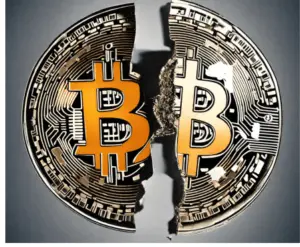Why Bitcoin Halving is a Big Deal in 2024: Understanding the Impact and Importance

Table of Contents
In the world of cryptocurrency, few events attracts as much attention and speculation as Bitcoin halving. On April 19, 2024, amidst the routine of daily life, the fourth Bitcoin halving occurred, marking a reduction in the block reward for miners from 6.25 BTC to 3.125 BTC. This event underscores the significance of Bitcoin halving and its implications in the realm of digital finance, particularly in the year 2024. So, what exactly is Bitcoin halving, and why Bitcoin Halving hold such importance in the current landscape? Let’s unravel the mysteries surrounding this phenomenon and explore its profound impact.
What is Bitcoin Halving?
Before understanding why Bitcoin Halving is a big deal, it is important to understand what is Bitcoin Halving? So, Bitcoin halving serves as a milestone marker in the journey of Bitcoin—a programmed protocol that regulates the rate at which new bitcoins are created. Occurring approximately every 210,000 blocks, Bitcoin halving involves cutting in half the reward given to miners for validating transactions and adding them to the blockchain. Initially set at 50 bitcoins per block, this reward diminishes with each halving event, gradually slowing down the creation of new bitcoins. For miners, Bitcoin halving represents a crucial moment as their rewards are halved, necessitating adaptation to the new economic landscape of reduced profitability.
Why Bitcoin Halving Happens?
To understand behind why Bitcoin Halving happens, it is important to see the rationale behind Bitcoin halving, which lies in its overarching monetary policy, designed to emulate the scarcity and deflationary properties of precious metals like gold. By gradually reducing the rate of new bitcoin creation, halving events ensure that the total supply of bitcoins approaches its predetermined cap of 21 million coins, thereby maintaining Bitcoin’s scarcity and value. This predetermined cap, combined with the fixed issuance schedule dictated by halving events, underpins Bitcoin’s status as a deflationary digital asset, offering a reliable store of wealth amidst economic uncertainties.
The Impact and Importance of Bitcoin Halving:
- Scarce Like Gold: With each halving, Bitcoin becomes scarcer, akin to precious metals like gold. This scarcity enhances its appeal as a long-term store of value, particularly during times of economic turbulence. That is why Bitcoin Halving is important for the organization, that founded Bitcoin.
- Potential Price Surges: Historical data suggests that each Bitcoin halving often precedes a surge in its price. As the supply of new bitcoins dwindles and demand escalates, prices tend to skyrocket, illustrating Bitcoin’s scarcity-driven dynamics. Following previous halving events, notable price surges have been observed, further bolstering Bitcoin’s reputation as a lucrative investment. That is just one another reason why Bitcoin Halving is a big deal.
- Enhanced Security and Stability: Bitcoin halving incentivizes miners to allocate computational resources to secure and validate transactions, thereby fortifying the network’s overall security and resilience against potential threats.

Challenges and Concerns:
- Centralization Worries: Critics express apprehensions that Bitcoin halving could exacerbate mining centralization by favoring large-scale mining operations with access to inexpensive electricity and specialized hardware, potentially undermining the decentralized ethos of the cryptocurrency.
- Volatility Challenges: While Bitcoin halving holds promise in the long term, it often triggers short-term price volatility, leading to market fluctuations and speculative trading. The above image shows the impact on the price of BItcoin due to Bitcoin Halving.
- Environmental Considerations: The energy-intensive nature of Bitcoin mining raises environmental concerns, with critics highlighting the carbon footprint associated with maintaining the network’s security. Discussions on mitigating this carbon footprint and exploring greener alternatives have gained traction within the cryptocurrency community. This led people to ask why Bitcoin Halving is even required.
Future Bitcoin Halvings
The question to ask is not why Bitcoin Halving happened in the past or this year, it is to be remembered that Bitcoin Halving is recurring phenomenon, which will keep happening in future as well. Based on the underlying philosophy and protocol, the next halving event is anticipated to occur in 2028, coinciding with the mining of the 1,050,000th Bitcoin block. With Bitcoin’s creator originally setting a cap of 21 million on the maximum count of Bitcoin blocks that can be mined, it is projected that the final Bitcoin will be mined around the year 2140, considering the current rate of Bitcoin issuance.
Conclusion
In the dynamic landscape of cryptocurrency, Bitcoin halving emerges as a pivotal event shaping the narrative surrounding the world’s foremost digital currency, particularly in the year 2024. Despite concerns raised by critics, the overarching impact of halving events on Bitcoin’s scarcity, price dynamics, and network security cannot be overstated. It reaffirms Bitcoin’s commitment to decentralization, scarcity, and value preservation in an era of seeking digital alternatives to traditional finance. So, the next time someone asks why Bitcoin Halving is required, remember: it’s not merely about numbers and code; it’s about sculpting the future of money in a manner that’s equitable, transparent, and resilient for all.
If you wish to read more similar articles. Click here
Frequently Asked Questions
The next Bitcoin halving event is expected to take place in 2028, approximately four years after the previous halving event.
Bitcoin halving plays a crucial role in maintaining the scarcity and value of Bitcoin by reducing the rate of new bitcoin creation, thereby ensuring its long-term viability as a digital asset.
Bitcoin halving reduces the block reward received by miners, impacting their profitability. However, miners often anticipate halving events and adjust their strategies accordingly to remain competitive in the mining ecosystem.
